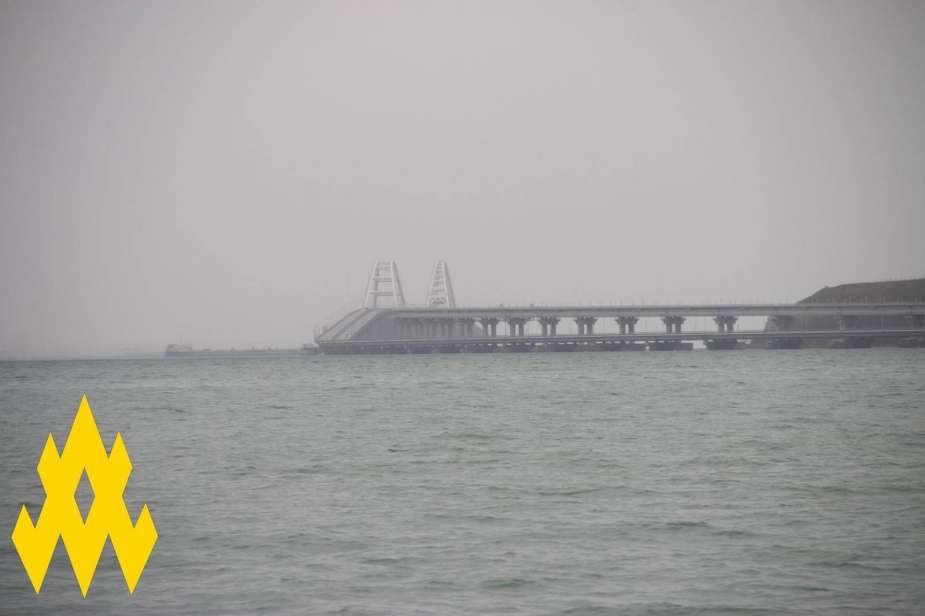- Army
- Conflicts in the world
- Israel - Iran conflict 2025
- Pakistan - India Conflict 2025
- Russia Ukraine War 2022
- Libya conflict day by day
- HAMAS - Israel War 2023
- Operation Serval in Mali French Army
- Sangaris operation Central African Republic
- Sangaris opération militaire République Centreafrique
- Ukraine - Russia conflict
- Syria conflict news
- Defence & Security Industry Technology
- Armies in the world
- Analysis Defense and Security Industry
- Conflicts in the world
- Navy
- Air
Russia deploys Pantsir-S1 and S-300 air defense systems to defend the Crimean Bridge
On April 2, 2024, the Crimean-based "Atesh" Ukrainian partisan group reported the deployment of Pantsir-S1 and S-300 air defense systems by the Russian Federation near the Kerch Bridge, which links the Russian mainland to the Crimean Peninsula, annexed by Russia in 2014. The bridge, known officially as the Crimean Bridge, is considered by Russia as crucial for both logistical, strategic, and psychological reasons in the region.
Follow Army Recognition on Google News at this link

The deployment of air defense systems, specifically the S-300 and Pantsir-S1 systems, seems to be a measure to protect the Kerch Bridge against potential Ukrainian air strikes. (Picture source: Russian social media)
The group's surveillance has uncovered the use of civilian vessels for transporting military cargo around the Kerch Bridge, suggesting the use of civilian vessels for the clandestine transportation of military cargo. Moreover, a decrease in patrol activities by Russian Navy warships in the vicinity has been noted, indicating a possible strategic shift or reallocation of naval resources within the Black Sea.
The surveillance also detected the deployment of air defense systems, specifically the S-300 and Pantsir-S1 systems, close to the bridge. This seems to be a measure to protect the Kerch Bridge against potential air strikes, pointing to an emphasis by the Russian Army on securing this strategic asset against aerial threats.
The Kerch Bridge, known officially as the Crimean Bridge, is a significant infrastructure project that links the Taman Peninsula in Russia's Krasnodar Krai with the Kerch Peninsula in Crimea. Stretching approximately 19 kilometers, it is recognized as the longest bridge in Europe and includes separate sections for both vehicular and railway transport. Initiated after Crimea's incorporation into the Russian Federation in 2014, the bridge was completed in stages, with the vehicular part opening in 2018 and the railway section in 2019. The project, which was managed by a company affiliated with a figure close to Russian President Vladimir Putin, has been a focal point of tensions between Russia and Ukraine, experiencing significant damage due to explosions in October 2022 and July 2023, attributed to Ukrainian forces.
From the perspective of Ukraine and much of the international community, the bridge is viewed through the lens of the 2014 annexation of Crimea by Russia, considered illegal and a breach of Ukraine's sovereignty. The construction and operation of the bridge without Ukraine's agreement have been criticized for undermining international norms and Ukraine's territorial integrity. The bridge's strategic importance extends beyond civilian use, given its role in facilitating logistical and potential military movements, which has made it a target in the ongoing conflict between Russia and Ukraine. Ukraine's actions against the bridge, including its targeting for military operations, are indicative of Ukraine's position that the Kerch Bridge will be destroyed after Crimea is liberated.

From the perspective of Ukraine, the Kerch Bridge is considered illegal and must be destroyed. (Picture source: Atesh)
This deployment strategy, including the positioning of Pantsir-S1 systems for the protection of critical infrastructure, as seen near the Kerch Bridge and in Moscow, suggests a tactical decision within the Russian military to secure key assets deemed vital for strategic, logistical, or psychological reasons within the conflict. For instance, as reported on September 5, 2023, the enhancement of Moscow's air defense system, following increased drone attacks attributed to Ukraine, involved the construction of new air defense positions and the strategic placement of various Pantsir systems. In January 2024, another Pantsir-S1 system was positioned on the roof of the Ministry of Defense building, aiming to further enhance defense against aerial threats and strengthen the sense of security among Moscow's residents.
The Pantsir-S1, designated SA-22 Greyhound by NATO, is an air defense system developed and produced by Russia's KBP Instrument Design Bureau of Tula. Combining missile and artillery capabilities, it is designed to defend military installations, industrial sites, and troop formations against aerial threats, including aircraft, helicopters, drones, cruise missiles, and precision-guided munitions. The system's armament includes 57E6 surface-to-air guided missiles and 2A38M 30mm automatic cannons, offering engagement capabilities at various ranges and altitudes.
Utilizing advanced radar technology, including Target Acquisition Radar (TAR) and Target Tracking Radar (TTR), the Pantsir-S1 provides comprehensive situational awareness and detection capabilities. Its radar system enables the detection and tracking of targets up to 36 kilometers away and at altitudes of up to 15 kilometers. The system's missiles have an engagement range of 1.2 to 20 kilometers and altitudes from 0 to 15 kilometers, while its cannons can engage targets up to 4 kilometers away and at altitudes of up to 3 kilometers. With its adaptability to different weather conditions and electronic warfare environments, the Pantsir-S1 offers a reliable defense against a wide range of airborne threats.
The S-300 series comprises surface-to-air missile systems developed in the late 1970s by the Soviet Union, aimed at defending against aircraft, cruise missiles, and, in later variants, ballistic missile threats. Throughout its operational lifetime, the S-300 has evolved through numerous upgrades, leading to the creation of variants such as the S-300P, S-300PMU, S-300PMU-1, and S-300PMU-2. These versions have introduced updates in missile engagement ranges, deployment flexibility, and radar performance to enable the detection and tracking of targets up to several hundred kilometers away. For example, the S-300PMU-1 can track targets up to 300 kilometers and engage them within a range of 150 kilometers. This variant can also engage targets at altitudes from roughly 10 meters to 27 kilometers.


























